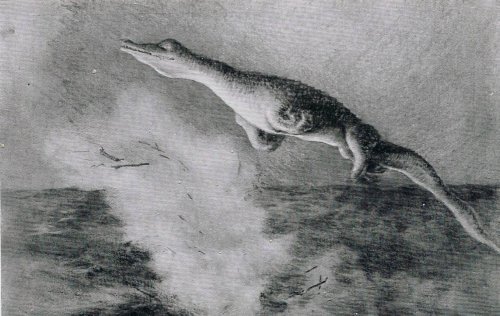
On July 30, 1915, the German submarine U-28 torpedoed the British steamer Iberian in the North Atlantic. Captain Georg Günther Freiherr von Forstner and his crew watched the ship sink rapidly under the waves, stern first. Then, a surprise:
When the steamer had disappeared for about 25 seconds it exploded at a depth which we could not know, but one thousand meters will be a safe guess. Shortly afterwards pieces of wreckage, among them a huge marine animal which made violent movements, were thrown out of the water, flying approximately 20 or 30 meters high.
At this moment we were six men on the bridge, myself, the two officers of the watch, the chief engineer, the navigator and the helmsman. We at once centered our attention upon this marvel of the seas. Unfortunately we had not time to take a photograph because the animal disappeared in the water after 10 or 15 seconds. It was about 20 meters long, looked like a giant crocodile, and had four powerful paddle-like limbs and a long pointed head.
“The explanation of this event seems easy to me,” von Forstner wrote. “The explosion of, or in, the sinking steamer caught the ‘undersea-crocodile,’ as we called it, and forced it out of the water.” When the story was attacked, von Forstner stood firm, declaring that he “would not give up a single meter of the length of the animal.” What was it? Who knows?
